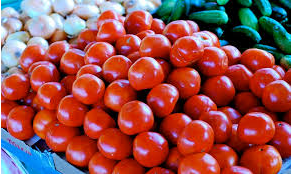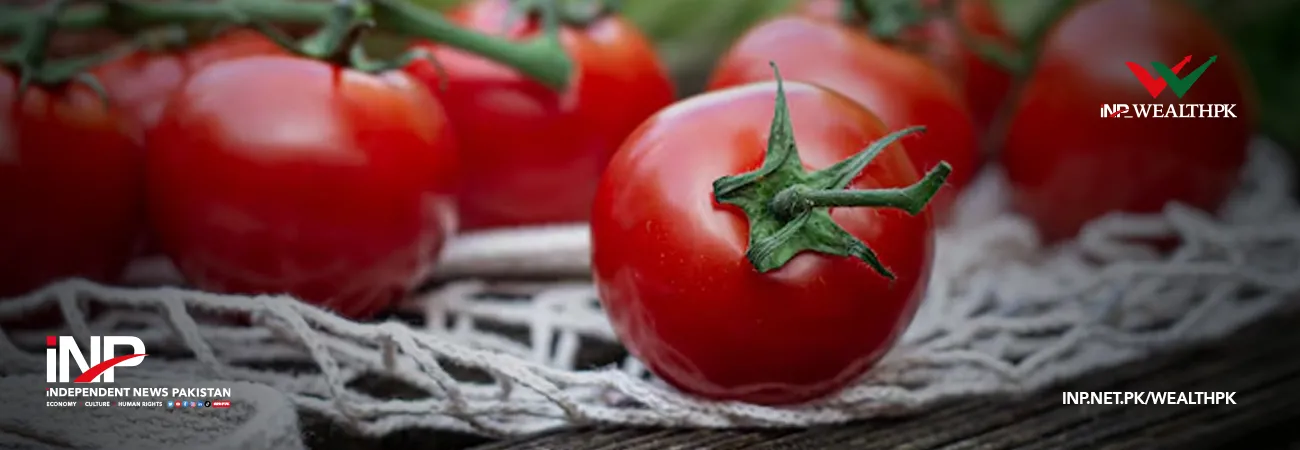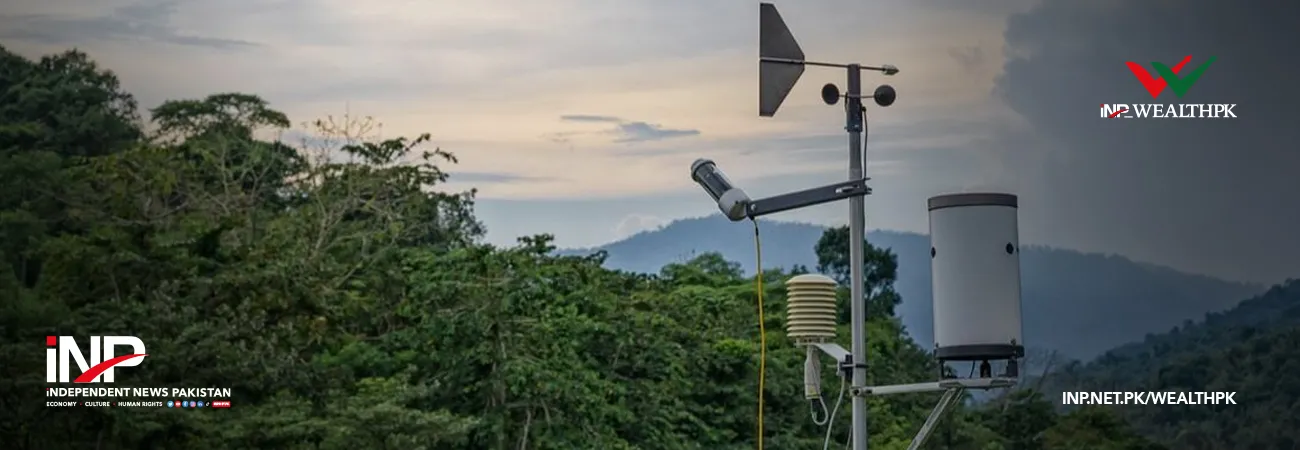INP-WealthPk
Ahmed Khan Malik
The tomato crop production across Sindh has suffered a serious setback this monsoon season of 2025 after widespread rains hit major growing districts, triggering fears of severe losses for farmers.
Districts including Badin, Mirpurkhas, Tando Allahyar, Tando Muhammad Khan, and Thatta endured heavy rains far above their seasonal averages.
In Badin alone, approximately 15,000 acres of tomato crops — planted between mid-June and mid-August — faced losses of 70 to 80 percent due to floods and waterlogging.

Tomatoes are particularly sensitive to excess moisture and stagnant water. In several low-lying fields, rainwater could not drain properly, damaging seedlings and mature plants alike. Nurseries were washed out, and the first pickings were lost before they could reach maturity.
Moreover, the rainfall exceeded norms by a large margin. For instance, in Badin district rainfall was about 200 mm, nearly double the typical amounts for this period. Such deluges overwhelmed drainage systems and exposed crops to diseases and pests thriving in damp conditions. Tomatoes, though a smaller crop relative to cotton or rice in terms of land area, have an outsized importance on kitchen tables and in markets across Pakistan.
“For many farmers, especially smallholders, the losses are catastrophic. In some cases, whole harvest cycles have been wiped out, meaning not only loss of immediate income but also capital invested in seeds, fertilisers, labour, and land preparation,” Naveed Jumani, a grower in Badin, told Wealth Pakistan.
He said that markets had already begun registering the effects as fresh supply of local tomatoes from Sindh was delayed, forcing urban centres to source from more remote areas like Balochistan. This raised transport costs, and in turn, was causing local prices to rise.
The Sindh Agriculture Department, through its Crop Reporting Centre and extension services, is determining how much land has been lost and which farmers can be aided. “Many farmers have invested heavily but will see no return; compensation schemes could alleviate immediate losses,” said Saeed Soomro, Director of the Sindh Agriculture Extension Project in Badin.
He added that efforts need to be expedited to save farmers in the future. For instance, better forecasting of heavy rains and floods would help farmers take protective action such as raising beds or shifting seedlings. He noted that the current damage underlines how vulnerable the agricultural sector is to climate shocks. With projections of more severe climate events in the coming years, the need for resilient agricultural practices has never been greater.
He said that small losses in non-staple crops like tomato may seem minor in macro figures, but for households, rural livelihoods, and food availability, they can be deeply felt. “If the government, researchers, and farmers can collaborate on longer-term adaptations now, future losses may be mitigated,” Saeed said. But in the short term, the 2025 monsoon has inflicted a hard blow to the tomato crop.
Credit: INP-WealthPk













